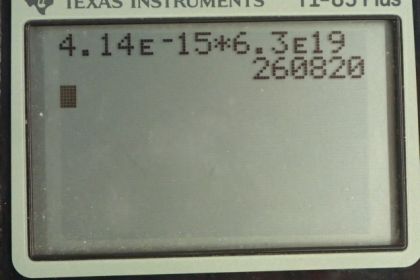Question
A nucleus is observed to emit a γ ray with a frequency of . What must happen to the nucleus as a consequence?
- The nucleus must gain 0.26 MeV.
- The nucleus must also emit an α particle of energy 0.26 MeV in the opposite direction.
- The nucleus must lose 0.26 MeV.
- The nucleus must also emit a β particle of energy 0.26 MeV in the opposite direction.
Final Answer
(c)
Solution video
OpenStax College Physics for AP® Courses, Chapter 31, Problem 1 (Test Prep for AP® Courses)

vote with a rating of
votes with an average rating of
.
Calculator Screenshots
Video Transcript
This is College Physics Answers with Shaun Dychko. If a nucleus is emitting some energy by way of a photon of this frequency it must lose that corresponding amount of energy in order for energy to be conserved. So what this photon has gained in energy the nucleus must lose in energy. So I'll figure out what the energy is of that photon and it's gonna be given by Planck's constant times frequency. So that's 4.14 times 10 to the minus 15 electron volt seconds times 6.3 times 10 to the 19 hertz which is 0.26 megaelectron volts. And so the nucleus must lose that amount of energy; the answer is (c).
